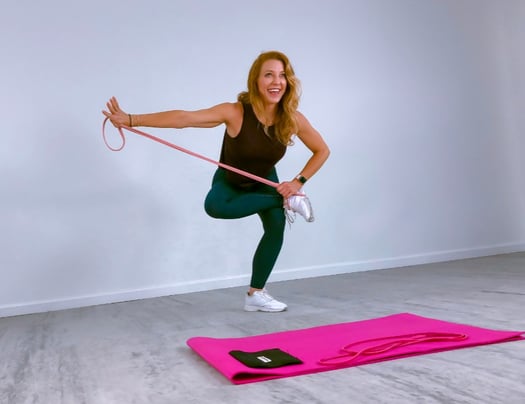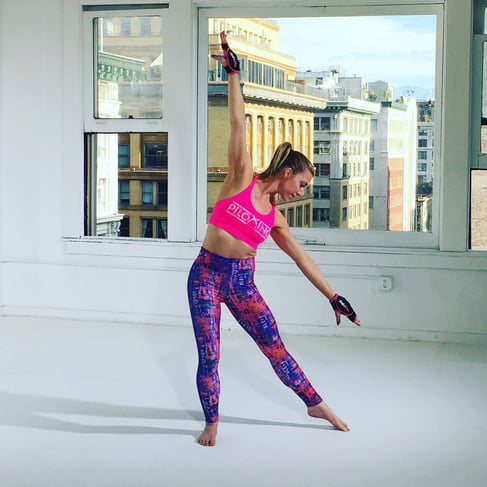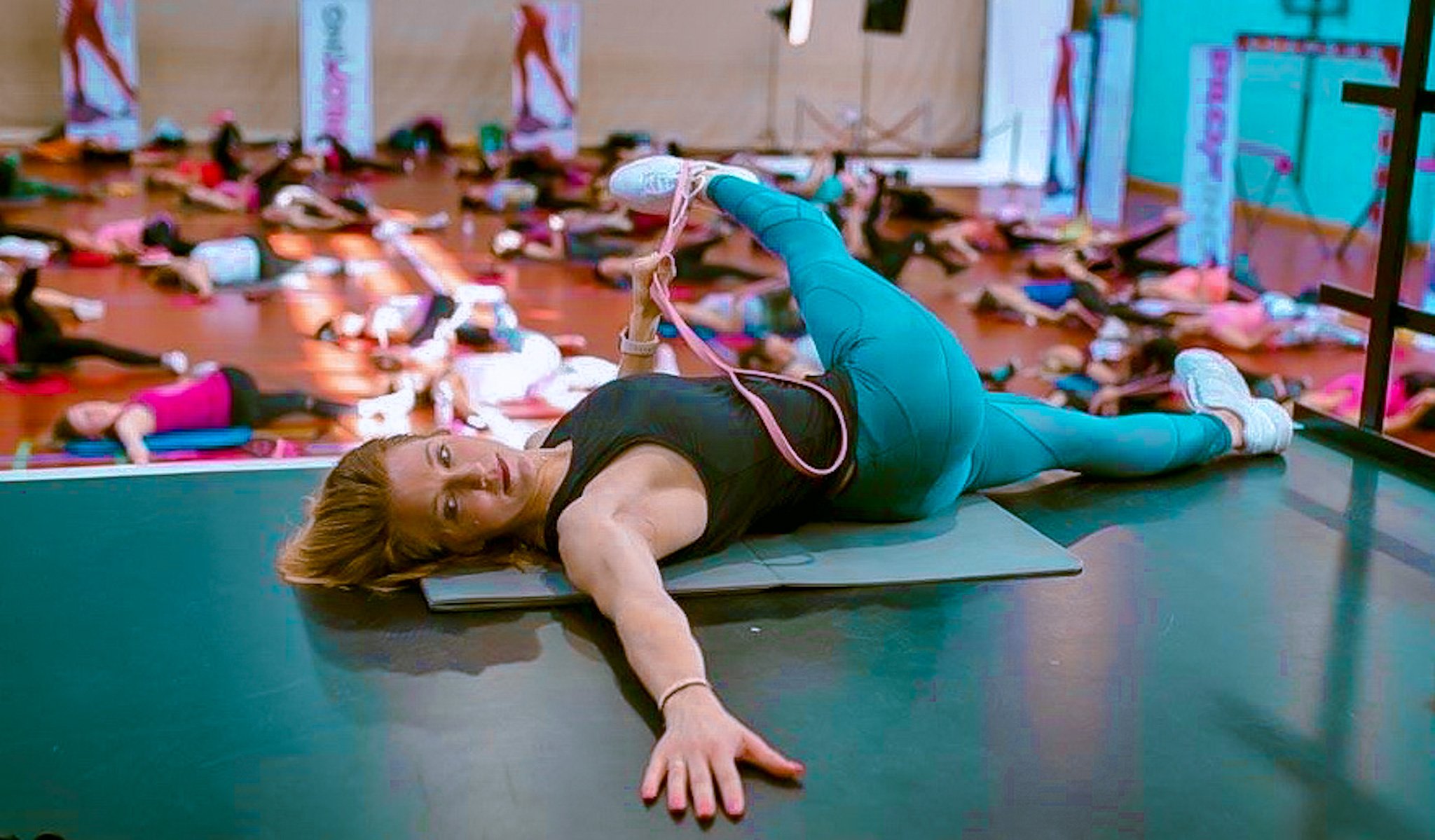Why is stretching so important?
We all have heard about the importance of stretching. Whether it is to improve your athletic performance, for general health and wellness, or to relieve pain and tension, stretching can be the answer. Let's dig a bit deeper into the importance of stretching and some techniques including when to do it...

5 Benefits of Stretching
1. Improve posture
Sitting on the computer or phone can cause muscles of the chest, back and hips to tighten leading to poor posture. Keeping these muscle flexible will not only aid in maintaining erect, proper posture but will decrease pain resulting from slumping or slouching.
2. Improve and prevent loss of range of motion
We lose range of motipn in our joints as we age. Ever noticed how some older people move a little more robotically? Shuffle the feet, struggle to rotate the neck and back? Well, it likely that they have lost flexibility in their muscles leading to decreased movements (range of motion) in their joints. Stretching as little as 10 minutes a day can help prevent this.
3. Decrease pain and stress relief
Poor posture in the upper back, the lower back compensates and can develop pain. Also, if we have tight hamstrings or hip flexors, the lower back compensates and can develop pain.When you’re experiencing stress, there’s a good chance your muscles are tense. That’s because your muscles tend to tighten up in response to physical and emotional stress. Stretching the tight, over or underused muscles can help improve pain and decrease tension improving mood.
4. Help prevent injury
If you stretch a muscle too far, it can become strained or torn. If your stretch and increase the range in which a muscle can move, the likelihood of injuring it decreases. Stretching before physical activity brings blood flow to the muscles, warming them up, and decreasing any tightness they might have to prevent a strain or a tear.
5. Decrease muscle soreness
If you have soreness in a muscle(s) from a recent workout or from a muscle strain, stretching can help relieve some discomfort. Often when we are injured, the muscles around the injury tighten up to protect us. Stretch these tight muscles to alleviate pain and soreness.

3 Stretching Techniques
1. Static
Allowing muscles, as well as connective tissues and fascia, to lengthen by actively or passively holding a position (aka stretch) for about 30-60 seconds. This is the most commonly known style of stretching but may decrease performance when done before physical activity as it may inhibit the muscle’s ability to fire properly. Why? If we overstretch our muscles, we inhibit elasticity, which inhibits our performance. When muscle tension is reduced by the stretch and the result is an increase in length between resting muscle fibers, the length-tension relationship of the muscle is altered causing a decrease in muscle excitability. Say what? Think of a rubber band that is fully stretched. If you hold this tension for a long period of time, the rubber band will increase in length but will lose the stored energy. The band’s tension is what allows it to be functional, stretching and expanding and retracting back to its original length. Our bodies rely on similar forces to propel us forward during a run, or allow us to jump high during a sport or exercises like a jump burpee.
When to use Static Stretching: Fitness experts recommend using static stretching after the workout to gain flexibility and prevent muscle tension gained during the workout. Static stretching during your cooldown will also help prevent injury and aid in recovery by creating better blood flow.
2. Dynamic
Active stretching that is performed by engaging the desired muscle’s antagonist (the muscle opposite of the one you are trying to stretch i.e. tightening the Quads to stretch the Hamstring) through the joint’s range of motion, only holding the stretch for 2-3 seconds. With this brief hold, the muscle is able to increase in length without a reduction in muscle tension or muscle excitability improving the range of motion without a loss in force production.
When to use Dynamic Stretching: Many athletes and group fitness experts use this type of stretch to prepare their muscles for the rigorous demands of their sport or workout.
3. Ballistic aka 'Bouncing'
Utilization of the muscle activation through quick, jerky, bounce-like movements. The body’s stretch reflex is inhibited and in-turn increases the muscle’s range of motion through the force created. The risk is that the extra external force produced can overload the muscle causing potential injury.
When to use Ballistic Stretching: Most fitness professionals do not recommend using this style of stretching as the high risk does not outweigh the benefits of the stretch. This type of stretching should be used only with professional supervision...Do not try this one at home folks.

How to get started
Take it slow especially if you are new to stretching. Just like other forms of physical activity, your body needs time to get used to the stretches you’re performing.
And let's not forget about proper form and technique to help prevent getting injured. Pay attention to your alignment and be mindful of pain vs discomfort.
Hold each stretch for 30 seconds and avoid bouncing or ballistic movements.
On days you exercise, aim for 5-10 minutes of dynamic stretching prior to your activity and do another 5-10 minutes of static stretching after your workout making sure to target the muscles used most during your workout.
To help improve flexibility, reduce muscle tightness, tension and pain and decrease stress, be sure to do at least 10 minutes on your 'off' days when you are not working out. Stretching can be done at any time during the day. Many people like to stretch after a nice hot shower when muscle are feeling less tense and blood flow has increased allowing for easier flexibility. Focus on the major areas of your body that help with mobility, such as your calves, hamstrings, hip flexors, and quadriceps. For upper-body relief, try moves that stretch the shoulders, neck, and lower back.
Happy Stretching!



